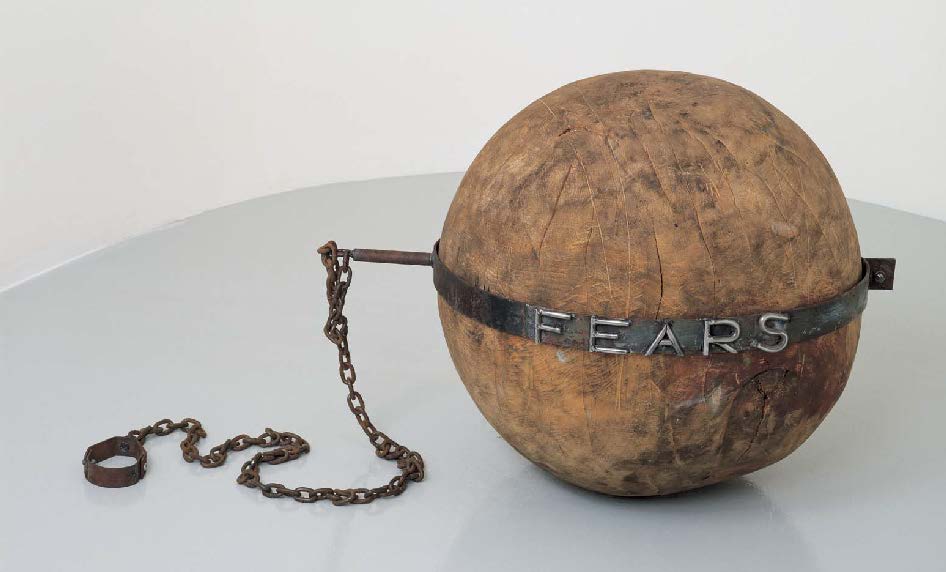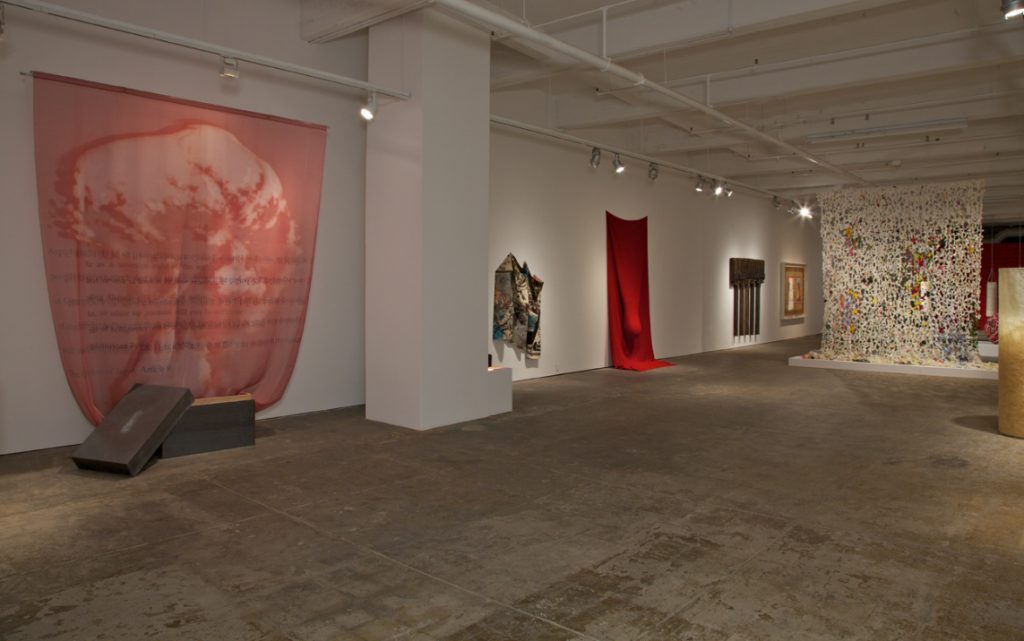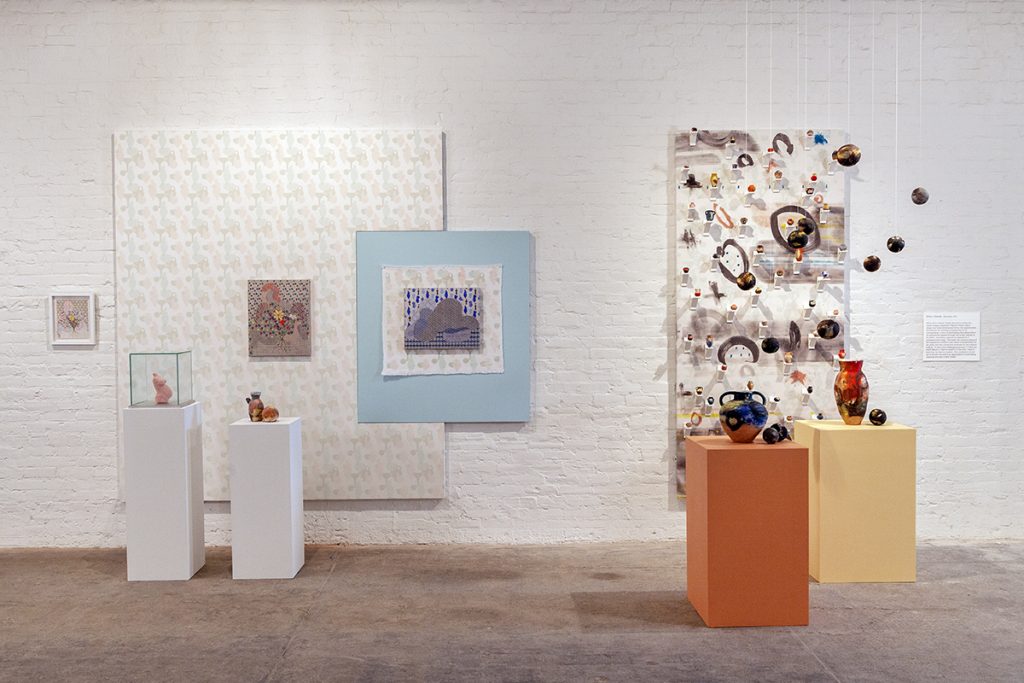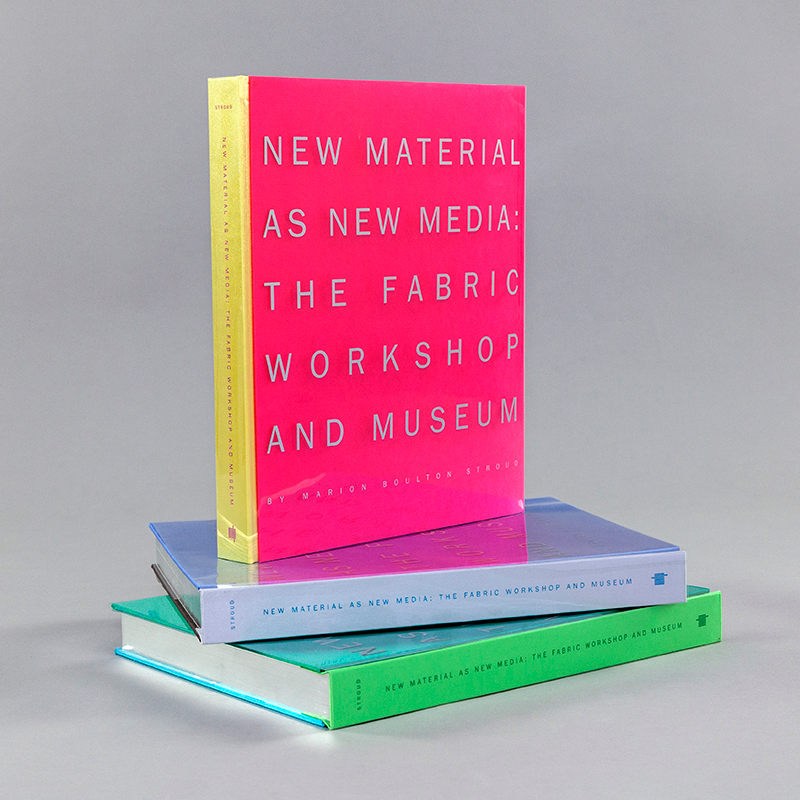In 1991, FWM invited Louise Bourgeois to participate in an exhibition of artist-designed scarves. Inspired by the vastness of the 75-foot long print tables in FWM’s studio, Bourgeois decided to make a “scarf” of enormous proportion that would eventually wrap the walls of a spiral exhibition space in much the same way a scarf wraps around a neck.
Bourgeois selected a story that she had written in 1947 to print in red pigment on white cotton voile:
A man and a woman lived together. On one evening he did not come back from work. And she waited. She kept on waiting and she grew littler and littler. Later, a neighbor stopped by out of friendship and there he found her, in the armchair, the size of a pea.
For the installation of She Lost It, Bourgeois placed a sculpture—a wooden ball with metal shackle, inscribed with the word “Fears”—midway through the spiral exhibition space. Circling through the gallery, one reaches the end of the story and the end of the spiral at the same time, which adds to the psychological poignancy of the installation’s themes of love, loss, abandonment, and fear.
Printed on cotton gauze, another version of She Lost It was used for a one-time performance held at FWM in 1992. Choreographed by the artist, the production began with models (staff members and friends of the artist) parading across the stage to Contemporary dance music wearing slips and undergarments embroidered with text written by Bourgeois. A figure enshrouded in the gauze “scarf” came onto the stage, and with the assistance of the models, his shroud was slowly unwrapped so that it could be read by the audience before being rewound around an embracing couple. At the performance’s end, the couple stood wrapped in the narrative, and the original figure was revealed as a man holding a pea in his hand.
10 years after her She Lost It performance, Bourgeois returned to The Fabric Workshop and Museum to create a sculpture entitled Pregnant Woman. This work was made specifically for FWM’s 25th Anniversary Benefit. The piece—made of fabric, glass and aluminum—displays the neck to the hips of a pregnant body. The body, a blush-tone pink with a shaggy, carpet-like texture, is charged with the interplay of power and fragility inherent in female sexuality. This theme can be seen across her works, as evidenced by a collection of prints and paintings created by Bourgeois under the same title only a couple of years later.





